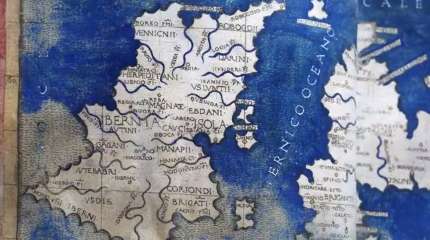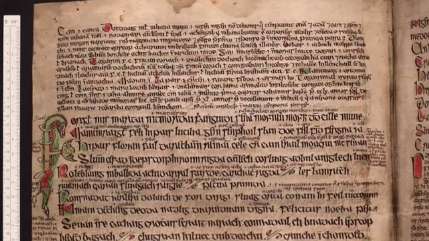Bilingualism among mediaeval Irish scholars was akin to bilingualism today

A mediaeval Irish monk was able to switch effortlessly between Irish and Latin when writing a book. This phenomenon of code switching is common to all eras; we switch effortlessly between Dutch and English nowadays too. Nike Stam researched this phenomenon by studying mediaeval calendar texts. She concluded that the way in which these monks switched languages in their writings was akin to the way we switch languages in our conversations. She defended her PhD thesis at Utrecht University on Wednesday, 7 June. Her research was made possible by funding from the NWO Free Competition programme.
For her research, Stam examined the 9th-century calendar of saints, Félire Óengusso, a long poem in which each day of the year contains a list of the saints that died on that day. Monks used to add comments and notes in the margins of the calendar texts. Stam closely examined both the grammar and the function of the language switches in these comments.
Her research revealed that code switching was often functional: it was used, for example, to emphasise certain elements in the text, such as quotes or the end of an account. The following example shows how Latin was used to add a critical comment to the text about Saint Balbina:
baluina uirgo 7martir. ł commad hí baluina .i. bicsech ochill bicsechi in huib maccuáis mide. s non est uerum.
Balbina is a virgin and a martyr, or she is (a different) Balbina, in other words Bicsech from Cell Bicsech in Uí Macc Úais in Meath, but that is not true.
In addition, it seems as though code switches appear in the text accidentally, for instance when a monk was unconsciously prompted to think in – and subsequently continue to write in – a different language by a word borrowed from another language or a language-neutral word.
Broadcasting identity

The bilingual texts seem to broadcast the identity of the mediaeval monks, an identity that was formed at a young age by being taught in both Irish and Latin. Mediaeval monks used a mixture of the two languages, just as young people today use slang to create and broadcast their group identity. Stam: 'By writing a text in a mixture of Irish and Latin, they emphasised their joint erudition and status by means of a sort of technical jargon.'
More information: Project page: www.nwo.nl/onderzoek-en-result … ecten/i/96/8396.html




















